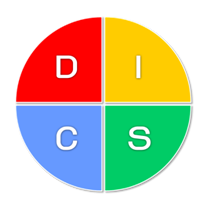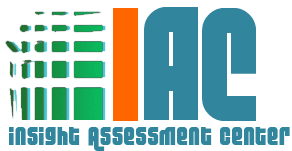





| iDISC plus |
 Validation Report Validation Report |
History of Personality
Date back up to 2,000 years, ancient people watched and observed different habits of humans. They tried to invent tools and methods to foretell human habits. In ancient Greek, 400 B.C., Hippocrates was interested in studying the diversity of human behaviors and categorized human behaviors into 4 temperaments according to basic emotions, i.e. Sanguine (cheerful, confident), Choleric (hot-tempered, restless), Melancholic (thoughtful, anxious) and Phlegmatic (relaxed, passive). From the core of ancient ideas, scientists and psychologists in subsequent era attempted to develop further. However, the early stage of psychological and behavioral study emphasized on mental disorder and clinical treatment. Until in year 1920, Dr. William Moulton Marston, a physiological psychologist, was one of the first attempts to apply psychology and behavioral science to “ordinary” people, outside a purely clinical setting. In 1928, he published his research in a book called “Emotions of Normal People”.
When a person behaves something, he or she actually “opens” what his or her brain recorded or was programmed in the past. It could be in forms of picture, event and feeling. The origin of behavior can be implied as the sinking part of the iceberg underwater. Behaviors can be either consciously or unconsciously. The unconscious part is caused from information accumulated in the past until became habitude and intuition which can influence over the moment mind. The conscious part of behavior mostly passes through analyzing, screening and practicing. It is adjusted and adapted to match with the situation or society at the time. Behaviors that are predominantly or often expressed become the unique personalities of a person which can be called “preference character” or “internal profile”. Preference character in each person varies, depending on personalities that the person developed progressively. However, it does not mean that a person does not express the undeveloped behaviors. But this means the person only behaves preferable behaviors much more often, both consciously and unconsciously. All these expressive behaviors are from a person’s perceptions or point of views to own self and surroundings environments.
What is DISC and its development?
Dr. William Moulton Marston, a physiological psychologist, was interested in studying the difference in human behaviors and behavioral response of each person in changing situations, stemming from the person’s “Perceptions” of self in relationship to his or her environment, as a model to explain behavioral response.
These two perception dimensions are significance to behavioral expression of emotion, thinking format, response mode to environment and other people that were accumulated from experience, learning and childhood input.
| More powerful |
Vertical Axis: is a person’s perception in comparable with own power within the environment whether own power is more or less powerful than external environment. This reflects the level of own power, the confidence level to express oneself and express opinions and confrontation level. For instance, if the perceived own power is high, the person likely dares to use his or her ability, persuade, control, force, be different or even challenge, change and estimate his or her capability at high side. On the opposite in the low side that the accumulated experience caused the person rather fears the surrounding matters, the person tends to be defensive, introvert and reserved his or her feelings, for instance, he or she prefers sticking to the group, following the group’s rule or going with the flows, being discomfort with immediate change and rather underestimate him or her capability, etc.
|
 |
|
|
Less powerful
|
| Unfavorable |
 |
Favorable |
|
Horizontal Axis: is a person’s perception of contentment to the environment and people. This reflects the trust level, attitude to the world, observation and suspicion. In terms of favorable contentment, the person tends to respond the environment and people in a friendly way with more trust and reliability, optimistic and rather not suspicious. On the opposite with unfavorable contentment, the response to environment and people tends to be more careful, doubtful, questioning; likely to increase cautiousness and tends to make plan concisely. |
||
By combining these 2 axes of human perceptions, Dr. William Moulton Marston placed the human behavioral styles into 4 quadrant categories, i.e. Dominance, Inducement (or later called Influence), Submission (or later called Steadiness) and Compliance (or later called Conscientious) which today is known as DISC, an acronym of each categories’ names.
Dominance : Put an attempt to control and conquer. Be result-oriented and retain power.
Influence : Put an attempt to influence people by persuading and inducing. Be expressive and attentive to gain attraction.
Steadiness : Put an attempt to be stable and consistent. Be relationship-oriented by giving support and help.
Conscientious : Put an attempt to right, certainty and safe. Be logic-oriented by focusing on rational process and system.
However, in reality, one person is a combination of the four styles with different proportions. Normally, in a person, there is one or two behavioral styles that dominantly express.
DISC model developed by Dr. William Moulton Marston was further built into assessment instrument and personality profile test in 1948 by Walter V. Clarke, an industrial psychologist. The instrument test was firstly used in personnel selection by business. Later, DISC model was applied in various careers and for different objectives that involved in interpersonal relation. A major step forward came with the development of the output report as DISC profiles or graph in a form that was easy to understand.
iDISC plus Assessment and Interpretation
DISC is as the universal language that represents the tendency of behavioral expression in one situation which reflects both positive and negative characters of each person. It also indicates person’s communication styles, either by body language, words or voice tone. For example, a Dominance person usually expresses with solemn face. Conscientious person is rather fussy, observant and usually suspicious, etc. These behaviors and expressions affect the output and occurrence.
DISC divides behavioral profiles into categories which help reducing the complexity of human’s behavior to be easily understood. Nowadays, such principle is further developed into many tools to assess personal profiles and behavioral patterns. It has grown and become widely used in many countries around the world and in various careers.
A team that consists of psychological experts and top management in organization dedicatedly develops iDISC plus Assessment from the fundamental of DISC Model theory, originated by Dr. William Moulton Marston, with the main reason of his logical and systematic research. His extensive research is reliable in explaining human behaviors by including environment context as coordinated factor. In addition, the explanation links each behavioral expression to each situation. And the explanation of linkage is in easily understandable way. The four personal profiles reflect personalities as follow:
 |
Dominance: The person direct, confident, decisive, determined, confronting, making quick decisions, fast-working, active, and result-oriented. The person who is dominant likes challenges, adventures and competitions, desires for power, eager to solve problems and looks at the big picture.
Influence: The person is communicating, chatty, open, socializing, enthusiastic, joyful with people, having sense of humor, optimistic, friendly, desiring in participating to help people and good at persuading people.
Steadiness: The person is calm, patient, good listener, sympathize others, gentle, humble steady, neat, cautious, proceeding gradually and taking ease. A person who has steadiness follows work direction, cooperate with the team and pay attention to safety and security.
Conscientious: The person is methodical, formal, adhered to rules and standards, disciplined, attentive to details and facts, accurate, analytical, rational, cautious, prudent, contemplative, introvert and reserved.
iDISC plus is an online assessment test with no complicated elements. It is a self-interpreted assessment test on the self-adaptation, emotional expression, motives, desires, world map and response to society and environment, based on the person’s attitude and feelings at the time of answering the questionnaire choices. The score reflects self-knowledge and awareness at the present moment, not “what the person is supposed to be or wants to be”. The assessment test can interpret the person at closest only when the answers are the most honest or close to the person’s attributes as possible.
From four main behavioral profiles, iDISC plus scrutinizes and subdivides human behavioral styles by primary behaviors, secondary behaviors and other next behaviors in order to indicate individual difference more explicitly. Apart from reporting the strength, weakness, motive tendency, tended behavior under pressure, communication style, management style and decision style, in addition, the report consists of analysis of adaptation, tendency of hidden tension and suggestion for improvement, self-development and interaction rapport adaptation. The report is designed in category with simple graphical form and explanation which can be easily understood.
However, the report from the self-assessment test cannot be used to judge behaviors or habits whether they are right or wrong or to specify the future. It also does not reflect the education level or intelligence. The assessment rather gives relative information about that person’s identity. It is a tool to help observe and analyze the person’s basic attitude (which affects his or her behaviors). Such information is used as supplement information for any person’s consideration. Person’s behavioral profile, no matter what type is, consists of both positive and negative elements. Therefore, it should not be compared to one another and should not be judged that which one is better.
Personal gain from learning own personality profile
Generally, people are interested in understanding external environment first, i.e. technology, tools, equipment, finance and other people rather than insight understanding oneself. Most people usually rather confuse in their own identity from feedback information others give either in a form of words, criticism, opinions and reflective feelings which are originated by their perceptions. It may not be always true as what the person is. Understanding oneself in both positive and negative sides through iDISC plus tool is like gaining feedback information from the person himself or herself. It reflects behavioral tendency, preferable expression, likes and dislikes, desires, satisfied environment, motives, tension stimulator, etc. With such information, the person can anticipate the consequences that may arise from his or her behavioral expression in various situations. Moreover, the person who understands the difference in people can usually accept and adapt to other people and situation better; create good relationship with others. That is to say, the self-awareness and self-knowledge are an important foundation to life advancement, personal success and career success.
Knowing oneself is an important foundation for a person to grow stability with clear direction.
ð Clearly assess own self both for strengths and weaknesses
ð Better balance own positive and negative sides
ð Properly express own self with full potential in expressing opinions and participating in activities
ð Self-develop by fostering strengths and adjusting weaknesses with clear direction
ð Communicate and make good relationship with understanding from the acceptance in the people difference
ð Adapt and flex own self to different situations more relaxingly
Application – Putting iDISC plus to work
iDISC plus can be applied practically in many activities that involve people in business utility. It is used to foster personal development, human resources management, recruiting and career matching. Assessment result can reflect individual personality profile, social communication style, decision style and problem confrontation style. It also indicates the preferable role in expression and in responding to environment, proficiency and motive more clearly. This particular information substantially helps in human resource management and team management in the organization as it can increase capability, maximize efficiency and add value to the job. This makes the organization outstand and succeed sustainably.
Sample of iDISC plus application;
ð Individual Development Program
ð Communication and Relation Management
ð Leadership Program
ð Team Building
ð Change Management
ð Conflict Management
ð Adaptability and Stress Handling
ð Coach and Motivation Program
ð Sales and Negotiation
ð Communication and Customer Service
ð Talent Management and Succession Planning
ð Recruitment and Selection
ð Job Matching
ð Career Path Development



